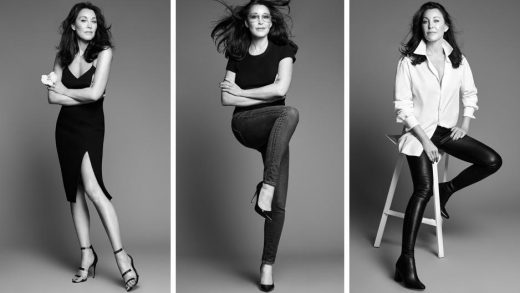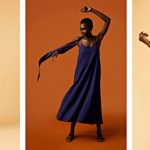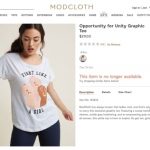Jimmy Choo Cofounder Goes Stiletto-First Into The Digital Future
In late 2015, Tamara Mellon decided to blow up her company. At least that’s how it felt to her.
“Sometimes you have to burn your house down and start again,” she says. “It’s an incredibly scary thing to do.”

Mellon is best known for leaving her role as the accessories editor at British Vogue at the age of 27 to cofound luxury shoe label Jimmy Choo in 1996. But after 15 years as chief creative officer at the brand, she decided she was ready to strike out on her own. In 2013, Mellon launched her own eponymous company, which sold clothes, shoes, and accessories that fused high-quality materials with a slightly edgy, rebellious aesthetic. Rather than adhering to the traditional fashion industry calendar, she sped up the time it took to get products to the customer from six months to three.
Things didn’t work out as planned, for a variety of reasons. Mellon recently filed a $4 million lawsuit against Jimmy Choo for threatening to boycott Italian factories if they worked with her, a move she said made it hard to build her new supply chain. A spokesman for Jimmy Choo called the suit “groundless,”in a statement to the New York Times.
In the end, she had to file for bankruptcy less than two years after she started. “It was obviously very sad and traumatic,” she says. “Then, you feel like a failure. But internal resilience had to kick in: I still believed in the company and I didn’t want to give up.”
Instead of hiding from her customers and the media, Mellon decided to tell her story of failing fast and bouncing back. “I decided to face this with complete honesty and confront the humiliation head-on,” she explains. “I thought that if I told my customers what happened, they will appreciate my authenticity because this kind of thing happens to everybody in their life. I wanted to turn it around and give people an inspirational story rather than a failure narrative.”
She’s back with a vengeance. Last fall, with the backing of NEA—the VC fund that helped launch Casper, and Jet—she started all over again with a new iteration of her brand. She says she’s learned from her mistakes. This time, she’s tweaked her business model: Rather than working with retail partners, she’s building a direct-to-consumer, digital-first company. She’s also pared down her product range to focus exclusively on shoes.
Mellon believes that the luxury fashion business is on the verge of major disruption, following on the heels of brands like Warby Parker and Everlane, that were built on the internet.
She shared her insight in a Q&A with Fast Company.
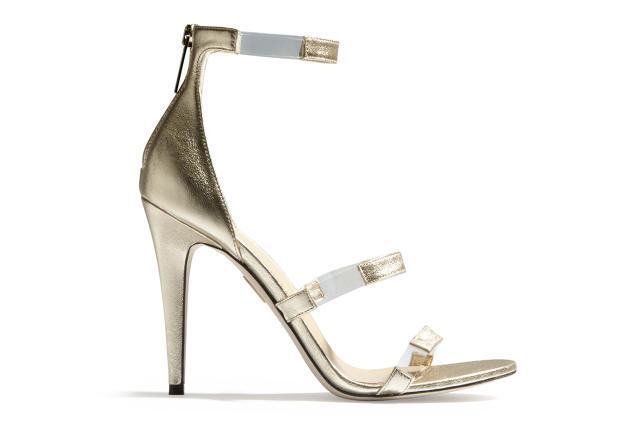
What is happening in fashion right now?
As we all know, every industry is going to be eaten by technology in the end: Music was one of the early ones, but now it’s fashion’s turn. Much like music executives refused to see that change was coming and didn’t want to adapt or do anything, fashion executives are resisting change.
One of the big issues in our industry is that when we show a new collection, we don’t deliver it until six months later. When I started out in the fashion business as a young editor in the early ’90s, the only people who were at fashion shows were press and buyers. The customer only saw the product in a magazine or on the shop floor six months later. It had this big exciting reveal moment, which made people want to buy. Now, everybody watches the fashion shows on social media, but it still takes us six months to deliver the product. It’s a non-event when the product comes in.
I believe the customer is already fed up with that. Nobody wants to think about what they want to wear in four months’ time. If you buy something today, you want to wear it tomorrow. The most planning a woman might do is start thinking on Wednesday about what she might wear on Saturday night if she has something special to go to. That’s how we live now.
When I sold my stake in Jimmy Choo and left the company, I saw the writing on the wall about what was happening in the industry. I had this vision for how to build a very different business model and a new kind of luxury brand. I thought that if I don’t do it now, I’ll never do it.
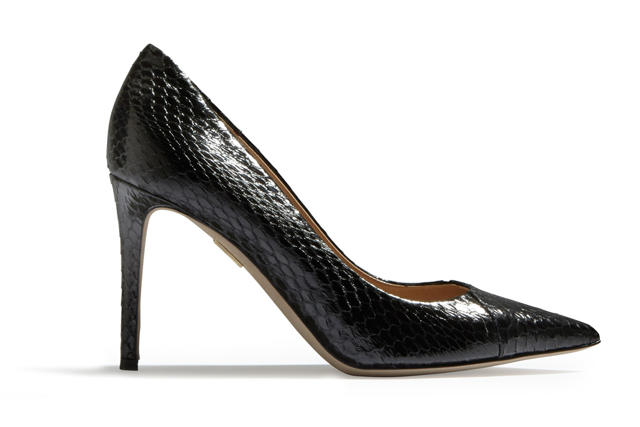
But implementing a “buy now, wear now” approach is easier said than done, right?
Yes. In some ways, I was too far ahead of the curve. Three years ago, when I launched the first iteration of my brand, I tried to shorten the gap by showing products three months before delivering them, instead of six, and showing only seasonally appropriate clothes. When I told retailers about my model, they looked at me like I had an alien growing out of the back of my head and said their financial planning was not set up for it.
All of this was aggravated by the fact that Jimmy Choo made it impossible for me to go to the factories in Italy I had been working with, even after my yearlong non-compete agreement ran out. (We reached out to Jimmy Choo several times, but have not heard back.) I wanted to go back to factories where the pattern cutter knew me and understood the quality I wanted. I had to scramble, go to a factory that didn’t know me, and unfortunately I produced shoes that were below my quality standard. Once you do that, people lose trust, and that spiraled my shoe business down, and I couldn’t dig myself out of it. It felt like I was pushing a rock up a hill every day.
In the end, I decided to blow up my company and reorganize it. I spent a lot of time finding new factories and teaching them exactly how I want my shoes made, and I’m very proud of the quality we have now. I’ve pulled my business out of the wholesale model. I talked to new investors, people who really knew about building a consumer tech business and a luxury brand for the next 20 years. I decided to sell my products through my own channel so I don’t have to rely on retailers. By doing a direct-to-consumer model, I can control when I release shoes.
So what is your strategy for releasing products?
I have a totally new approach this time around. I got rid of designing seasonal collections, because I think that’s outdated. At Jimmy Choo I designed four collections a year. With my brand, I have one collection of basics that stays online all the time: the classic pump, the modern strappy sandal, flats. They’re all made in Italian factories that make shoes for other luxury brands. Shoes should last for years: You want some iconic, timeless pieces.
But to keep things exciting, we have a section called Lab where we deliver between three and five fashion pieces every month. So you have new products coming in and customers have a reason to come back. They’re limited, so if you don’t get it, you’ll never get it, so it creates a sense of urgency to get it if you like it. That’s the future: just giving small, mini-collections.
Why did you decide to cut out ready-to-wear clothes and bags from your collection this time around?
What I realized is that when you have a startup you have to focus on one category and become respected for that. So I decided to go back to my roots: shoes. You need to build your core business first, then you can go into other products. In my first iteration of the brand, it was like starting three separate startups: I had a ready-to-wear team, a bag team, and a shoe team. All those channels of business have different supply chains.
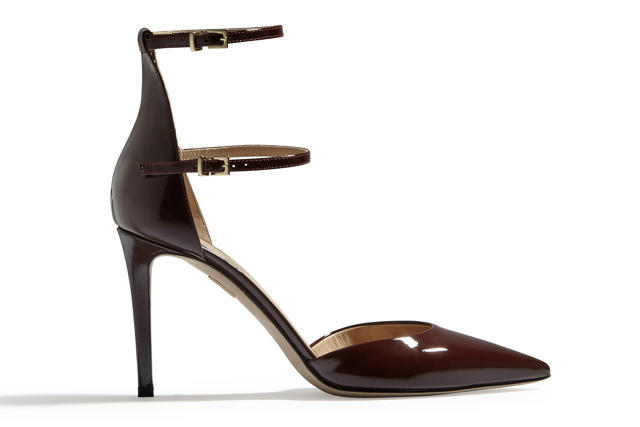
Do you think today’s luxury customer is willing to spend as much on shoes as she was in the past?
The consumer is much smarter today. You have brands like Everlane lifting the lid on pricing structure that the fashion business has kept secret for 50 years. I pay the same factory price as I did while I was at Jimmy Choo. But my customer understands markups. She understands that I don’t put my products through the wholesale channels, which is how I get to a lower price. Instead of selling a pump for $600, I am selling it for $350, which is an entry-luxury price.
The genius of this approach is that I can reach a much bigger audience of women. I attract the young girl who is coming out of college who wants a really beautiful pair of pumps she can wear to a job interview and will stretch for a pair of my shoes. But I also have the woman who has been buying high-end luxury shoes for years and when she sees my brand she thinks, “Oh my God, the shoes are basically free” then buys 20 pairs.
As a digital-first brand, do you find that you engage with your customers differently than you did when you had brick-and-mortar stores?
Yes, I definitely think that the way we communicate with consumers is changing. Luxury brands used to operate with designers sitting in their ivory tower dictating the trend of the moment and telling everybody to wear this or that.
But selling online is about creating community and being able to have a conversation with your customer. The engagement we’ve had on social media has been phenomenal. Before we launched, we began telling the story of the brand on Instagram. The response was unbelievable: People actually thanked me for sharing my story of failure and rebirth. Some followers wrote to me saying that because I was so honest about my turnaround, they were now not going to give up on their dream.
Fast Company , Read Full Story
(12)

